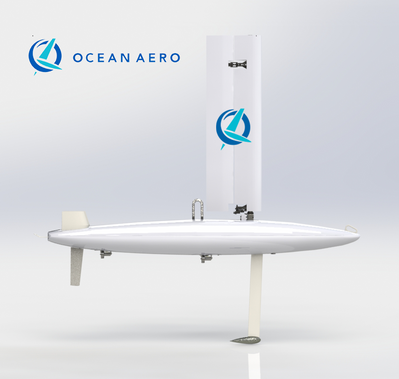Ocean Aero, Inc. announced it signed a multimillion-dollar agreement to deliver a variety of the company’s autonomous underwater and surface vehicles (AUSV) models to the U.S. Department of Homeland Security (DHS) Science and Technology Directorate (S&T) for a research, evaluation and testing program.
Ocean Aero will deliver a mix of its Navigator and Discovery models and working closely with DHS and other program participants—the U.S. Coast Guard (USCG), U.S. Customs and Border Protection (CBP), The University of Southern Mississippi, the U.S. Naval Research Laboratory (NRL), and Cherokee Nation Strategic Programs, LLC. Ocean Aero’s vehicles will be deployed in a wide range of ocean environments providing a platform for the integration, testing, and evaluation of a variety of advanced sensors.
“This is a strategic agreement, and we’re proud to be working with DHS S&T and such a distinguished group of organizations, who are committed to protecting the maritime environments surrounding our nation,” said Eric Patten, CEO of Ocean Aero. “This new program is in line with the Commercial Engagement through Ocean Technology (CENOTE) Act of 2018 and adds to the rapidly increasing adoption of unmanned systems by our government agencies.”
Ocean Aero produces three models (all 4 meters in length)—the Navigator, Discovery, and Scout. All of the models feature a unique combination of folding wingsail and solar panels that enables them to traverse long distances.
Rechargeable lithium-ion batteries power command, control, communications and sensor payload functions. The retractable wingsail allows the vehicles to submerge and avoid harsh surface conditions, evade detection, and perform subsurface data collection tasks.
Each model has distinct capabilities as well. The Navigator performs duties on the surface and can transform into a fully autonomous underwater vehicle, capable of submerging to 200 meters depth. Precise underwater navigation is achieved using an Inertial Navigation System (INS) coupled with a Doppler Velocity Log (DVL) with propulsion coming from dual electric thrusters. The Discovery is not equipped with an underwater navigation system, as it is designed to collect vertical and horizontal profile data while submerging to maximum depth of 100 meters. The Scout is a fleet surface data collection vehicle, easily directed to a variety of positions in a mission set. The Scout can also submerge to the water surface level to provide added survivability in rough weather or if needed, decrease the detectability of the vehicle.
The Launch and Recovery System (LARS) for all models is a simple, safe, and time-saving solution and can be operated from ramp, dockside or at sea. Supported by U.S. patents, Ocean Aero’s intelligent autonomous technology is ideally suited to fit the program’s various strategic maritime missions, ranging from intelligence and surveillance to marine mammal tracking, to Met-Ocean data gathering to persistent situational awareness.






